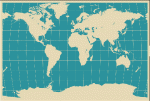Web catalog
Most read
Most read last 7 days
Most Discussed
Top rated
Statistics
- Total registered users: 9886
- Total articles: 23656
- Total comments: 2087
- Last entry: Kebo presenting evidence that Izetbegovic brought mujahideen to Bosnia
- Last update: 11.01.2019. 23:44
Fear rules over Bosnia
Written 27.11.2009. 13:18
Having come to the realization that the Ottomans could no longer provide them with adequate protection, Bosnian Muslim aristocrats rebelled in order to keep their superior status and to get autonomy (Gradascevic's movement) within the Empire. All this resulted in repressive measures against the Bosnian nobility and other prominent members of Bosnian Muslim community. The events of the 19th Century opened up the cracks in the relationship between the Bosnian Muslims and the Ottoman Empire, but also between the Bosnian Orthodox and Catholics, who kept neutral or sided with Austria-Hungary or Serbia & Montenegro throughout the dispute which culminated in the occupation of Bosnia and Hercegovina in 1878.
The bloody conflict on the eve of the 21st century is the culmination of a centuries old development (one might say, an inevitable working out of historical fatality) that was falsely considered to have ended in WW2, when in the name of Greater Serbia the Bosniak-Muslims had been objects of a genocide.63 This time around, things were "modernized". Greater Serbian aggressive policy unleashed an instrumentalized aggression (intensified chiefly via media manipulation)64 The repressed explosive compound of fear and malign aggressivity was already present (although in a subdued form) at a tribal level among the Bosnian Serbs.
It is clear that the bloody conflict at the time of the breakup of Yugoslavia was a result of the clash between different historical and national aspirations/tensions that have been building up for centuries. Three national ideas, at least as memories (or powerful myths), are a historical truth. The first national ideal is that of the medieval Bosnia, which was occupied by the Ottomans in 1463. That kingdom could have been a basis for the creation of a nation comprised of the indigenous population, Croats and Bosniak-Muslims. The second national ideal or outcome relies on Croatia, since many Croatian historical regions are a part of today's Bosnia and Hercegovina. This idea was taken further by claims that Croatia extended all the way to the Drina river, but that cannot be proven. Of course, the claim that Bosniak-Muslims are "actually" Croats (without knowing it) fits neatly into this theory.
The third national ideal is based on the existence of a separate Bosnian Pashaluk, which spread from the initial core onto Croatian regions. The fourth national ideal, the Serb one, has no grounding in history, because there had never been a Serbian kingdom here that could be the foundation for a modern nation. This ideal can only be realized through brute force, ethnic cleansing and falsifying history where the most surrealist absurdity is the oft used Serb call to the Muslims - to "return to their forefathers's faith - Orthodoxy". The conflict between the above ideals, the flames of which are fanned by the Serbian state in order to create a Greater Serbia, is horrific. Geopolitically, as we have observed, Bosnia is not worth much without Croatia. Since this panoramic view of conflicts between national ideals shows that Serbs have learnt the geopolitical lesson (but have, due to overtaxing of their energies, failed to accomplish the Greater Serbia masterplan), one is left with conclusion that Croats and Bosniak-Muslims are still groping in historical wastelands.

























































 Kontaktirajte nas
Kontaktirajte nas
No comments